As a way of getting around, the bike is hard to beat. It's often the quickest form of transport for journeys less than 5km. Cycling is affordable, fun, non-polluting and great for staying fit and healthy.
If you’re new to riding a bike or haven't biked in years, it's a good idea to learn the basic cycling skills(external link) needed for riding safely on the roads. You can practice in your driveway or a local court with no cars around.
If you’re not experienced at riding in traffic, take some time to practice your skills and build your confidence on quieter roads or one of Christchurch's cycleways, and consider signing up for our free Adult Bike Skills workshops.
The best route to ride is often different from the route you'd drive. Plan your route to make use of cycleways, shortcuts through parks, and neighbourhood streets with less traffic and lower speeds.
Check out our Christchurch cycle map.
If you're unsure about your best route, test-ride it when you have plenty of time.
Be familiar with the official New Zealand code(external link) for cyclists and check out Waka Kotahi's cycling website(external link) for more detailed information on cycling in NZ.
With more people choosing to cycle to get around, awareness, respect and courtesy are key to help everyone get where they’re going safely.
Here are a few tips to help things go smoothly.
Be aware, communicate clearly, ride predictably and be in control
- Always be aware of your surroundings. Check regularly behind as well as ahead of you. Watch for car doors opening and other people moving around.
- Make extra checks around intersections where people may turn across your path.
- When riding through queues of stationary or slow-moving vehicles, scan ahead for gaps where people turning may unexpectedly cut across your path. Slow down and be ready to stop quickly.
- Control your speed so you can react quickly if needed.
- Be predictable and confident - make eye contact with others, use clear hand signals to indicate when turning. Avoid weaving when riding alongside parked cars, staying at least a metre away to be clear of the door zone.
- Ring your bell when approaching people you plan to pass, slow down and give them space.
- Thank people you're sharing space with. Positive interactions go a long way to building a considerate culture to make getting around more pleasant for everyone.
- Plan your route – choosing which way to cycle is usually different from the route you would drive. Check out our cycle map to plan your route according to your cycling confidence levels.
- Check your bike is in good working order. See our page which covers basic bike maintenance.(external link)
Be seen
- During the change of seasons, be prepared with working lights on your bicycle so you can be seen.
- Bike lights in flashing mode are more noticeable and use less battery power.
- Reflectors, reflective strips, reflective bag covers and reflective ankle bands can help you be more visible.
- Consider wearing brightly coloured clothing or high visibility accessories.
Cycleways are a proven way to improve the health of a city, reduce congestion and reduce the cost of infrastructure. So whether you are biking, driving or walking, please take care around the new cycleways.
Hook turns
Hook turns are a safer way for people on bikes to turn right at an intersection.
- Stay in the cycle lane as you enter the intersection and stop in the green hook turn box.
- Wait until the traffic signals on the other side of the road turn green and then cycle across the intersection keeping left.
Hook turns can be done at almost any intersection, including ones with or without the marked stopping area.
Sharrows
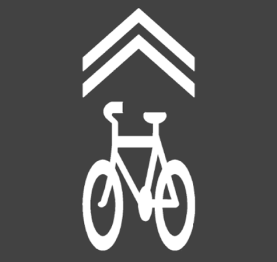
Shared lane markings, called sharrows (share arrows), indicate the most sensible place to bike on the road. They are often used on roads without dedicated cycle lanes, to help people cycling and driving share space.
Sharrows direct people cycling to ride towards the middle of the road to avoid opening doors from parked cars, pinch points and stormwater grates. For people driving, sharrows are a prompt for where you can expect to see people cycling.
Sharrows are a common feature along cycle routes and can be found:
- at roundabouts
- in low-speed environments
- in neighbourhood greenways.
In these areas, everyone can move around more comfortably in a slower environment.
Find out more about sharrows(external link).
Cycle priority crossings
Green-painted cycle priority crossings, and paired cycle priority and pedestrian crossings mean that drivers must give way to people on bikes and on foot (including on scooters and skateboards).
People crossing need to check before entering the priority crossing that any drivers coming have seen them and are able to stop.
Taking your bike on the bus
All buses in Christchurch have bike racks, and they’re free and easy to use.
The racks give lots of options, like accessing recreational rides that are further away, taking your bike through the Lyttelton tunnel, and getting home if it starts raining hard.
Check out Metro’s handy how-to video below that shows you how easy it is. If you’ve never used the bus bike racks, have a practice on the test rack at the Bus Interchange.
For more details and frequently asked questions, go to the Metro website(external link).
Driveways
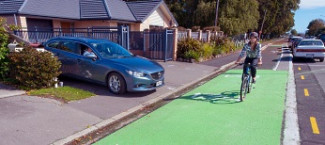
Drivers must give way to people on bikes and on foot (including on scooters and skateboards) when entering or leaving a driveway.
If possible, people should drive forwards out of their driveway.
If a two-way cycleway runs in front of a property, cyclists can be coming from both directions.
Remember to not park on the cycleway.
Two-way path or cycleway
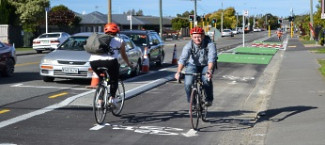
Stay left if you are walking or riding on a two-way shared path or two-way cycleway.
In-lane bus stops
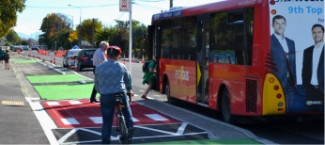
In-lane bus stops require that people on bikes stop to give way to passengers getting on and off the bus.
Bus passengers should stand on the footpath rather than the cycleway while waiting for the bus and check for people on bikes before boarding or exiting.
Traffic signals
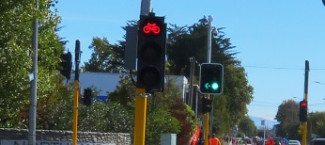
Take care to follow the designated cycle traffic signals.
Target the diamonds to trigger the lights.
When a bicycle rides over the white diamonds, this triggers the cycle traffic lights at the crossing.
Railway crossings
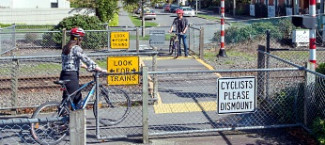
Only cross at designated crossing points.
At a controlled crossing, cross only when red signals have stopped flashing, the barrier arms have lifted and the bells have stopped ringing.
If the railway crossing is not controlled, look as far as you can up and down the railway line to check for trains.
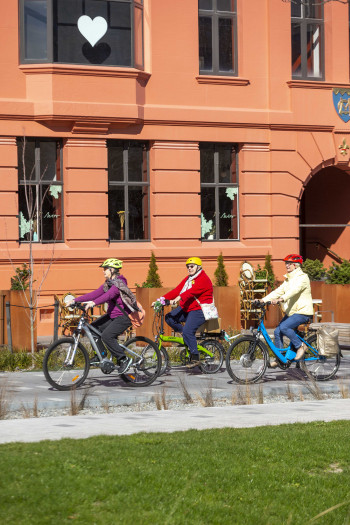 The Cycling Christchurch website(external link) encourages and supports cycling in our city, with lots of news, information and events.
The Cycling Christchurch website(external link) encourages and supports cycling in our city, with lots of news, information and events.- Waka Kotahi's cycling website (external link)has comprehensive information on all things cycling.
Related news
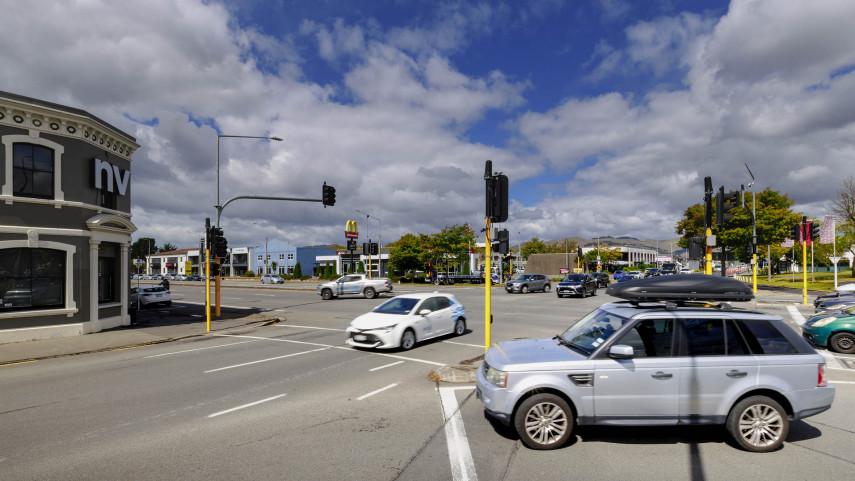
News in brief from the Christchurch City Council meeting
Improvements on Moorhouse Avenue, speed limits around schools, tsunami sirens and Central City development contributions – here are the key decisions made at today's Christchurch City Council meeting.
18 Jun 2025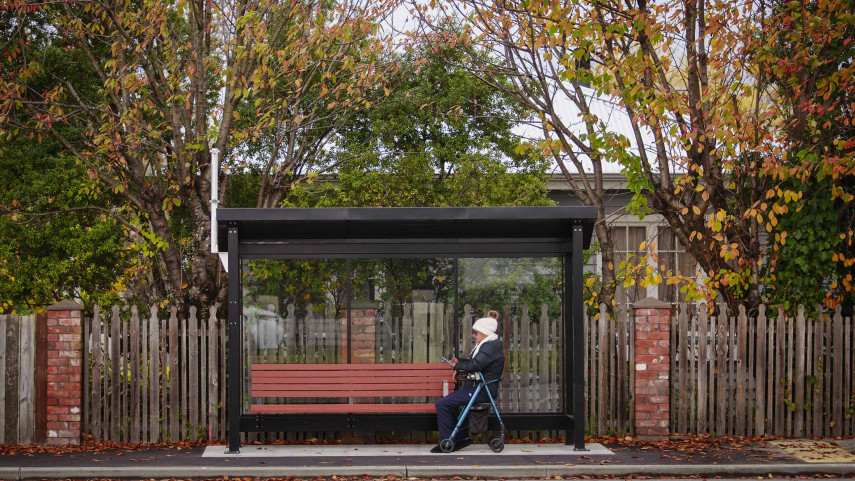
Shelter upgrades for Christchurch bus users
Waiting for the bus will be a bit easier this winter at some of the most well-used stops in the city’s east.
5 Jun 2025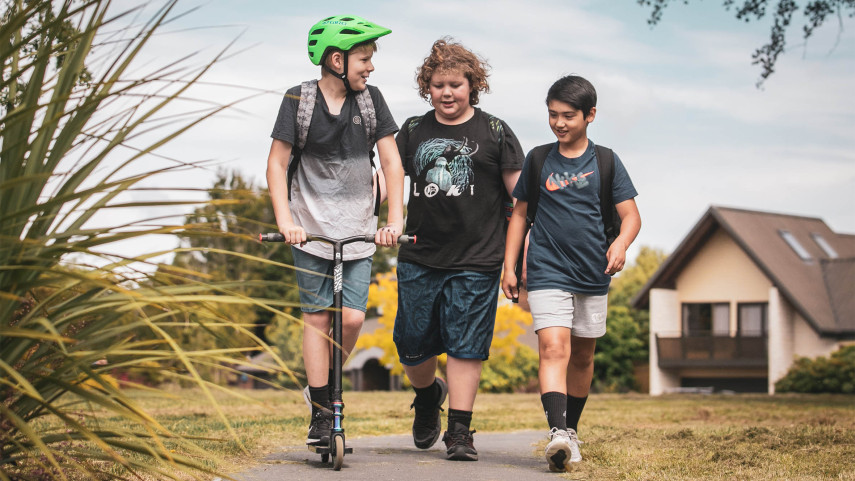
Safer streets proposed around Halswell schools
Plans to make streets surrounding three primary schools safer and easier for tamariki to use are out for public feedback.
27 Mar 2025